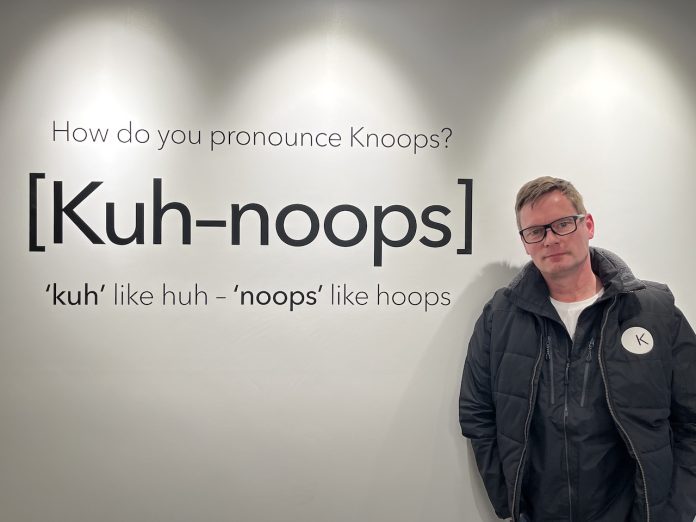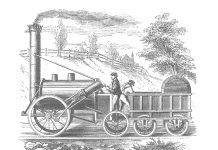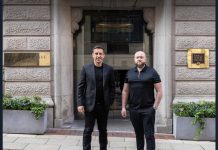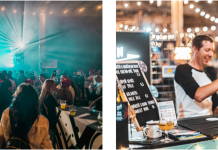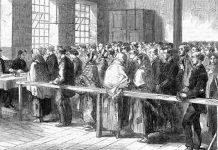Knoops, the store that offers a personalised drinking chocolate experience, has opened in Manchester. Taking over the former Chopp’d site on Cross Street, they offer a range of hot and cold chocolate-based drinks with enhancements. It’s predominantly a take-out service, but there are 14 seats if you want to linger over your luxury beverage. It also sells a range of top end chocolate flakes if you fancy recreating the drinking chocolate experience in the comfort of your own home.
German-born Jens Knoops opened his first store in Rye in 2013 and he has chosen Manchester for the first Northern branch. The back wall features a display of clear graphics showing chocolate varieties with the cocoa solids listed in percentages from 28% white, through a range of milk and dark up to 100%.
It can be a little intimidating to the uninitiated, so they’ve tried to make it as simple as possible through Knoopology, their signature four step guide.
- Choose whether you want a hot chocolate, iced chocolate drink or a milkshake
- Choose the percentage of cocoa to suit your taste.
- Choose your milk, from cows to a range of vegan alternatives
- Add your choice of flavouring

It’s seems fairly straight forward to choose one of the more extremes such as 28% or 100%, but how do customers start to differentiate between the cocoa percentages in the middle? At between £3.95 and £5.95 for a small cup, you don’t want to be left with something that’s not right or you – especially when this place comes with the reputation of serving some of the best hot chocolate in the country.
Fortunately, when I visited on the opening day the boss himself was on hand to be my guide and explain in more detail.
“Technically they’re very different chocolates,” explains Jens. “43% and 49% are milk chocolate. 54% and beyond are vegan friendly dark chocolate which do not have the milk solids. In terms of sweetness, the percentage stands for the amount of cacao. The higher the percentage, the less sugar. So low numbers are naturally sweeter, higher numbers are much stronger and bitter for some.”
Like an espresso? “Yeah, in terms of intensity,” he agrees, “but it’s very subtle.”
Do all the drinks have to have milk or can they be drunk like an espresso shot?
“We prepare our chocolate in more of a French/Belgian style, which is milk based,” says Jens. “The Italian Spanish style which is either just melted chocolate or water based with corn starch.
“We froth the milk, just like a latte or cappuccino to bring air into the drink which makes it lighter and gives it a better mouthfeel. Though there’s a very high percentage of chocolate in there the drink has a lighter texture because of the aeration.”
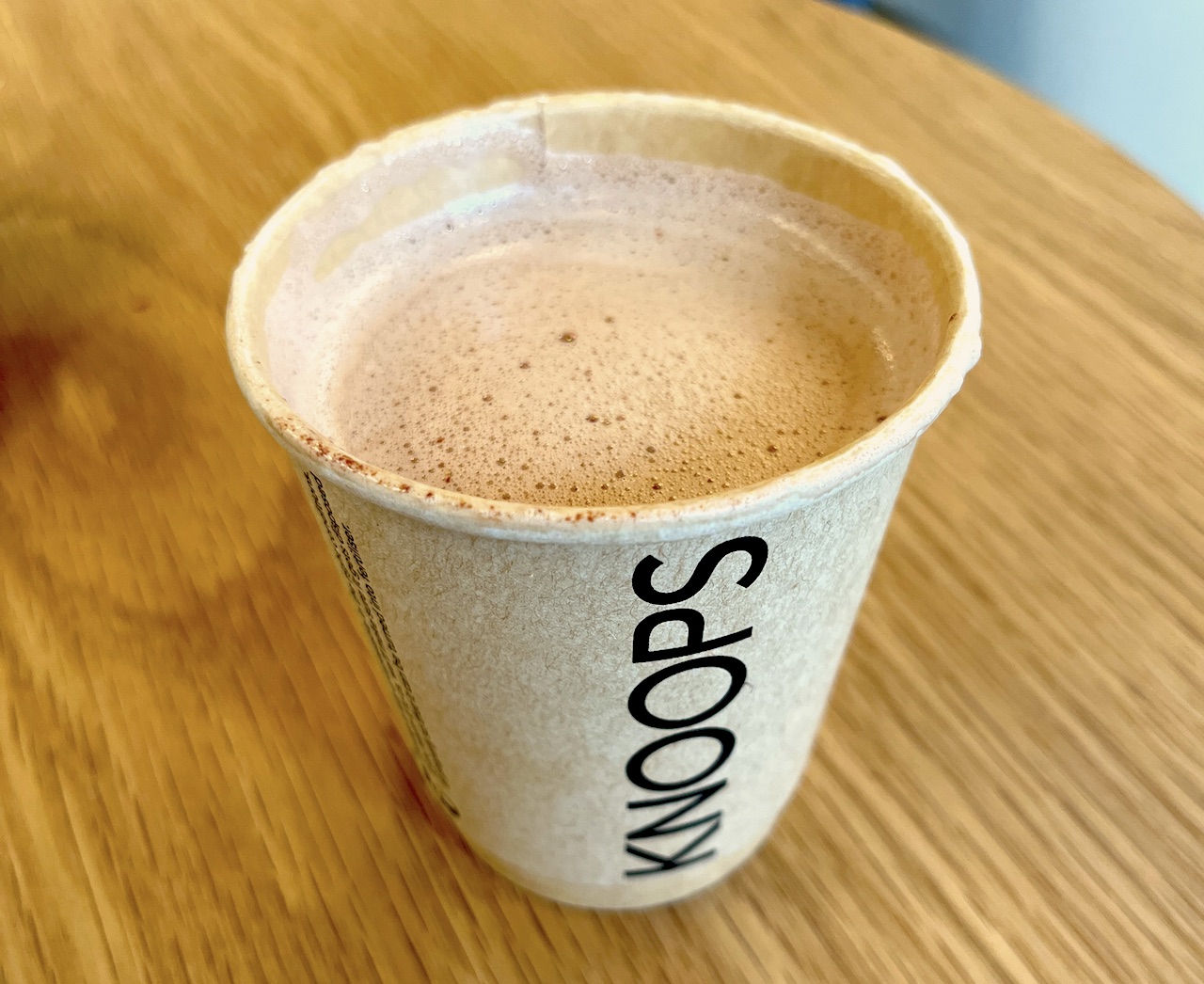
Is the Spanish style closer to the origins of drinking chocolate?
“The very first chocolate drinks, about 5000 years ago, were frothy, poured from high or made with a whisk” says Jens, more than happy to go into some historic context. “The froth on top was the crown of the drink. Rich influential religious leaders drank a lot of chocolate, and the more they could afford to drink, the higher their ranking in society. The priest got the froth, and the rest went to lower levels. The quality of chocolate-making and fermentation was of a much lower standard then, so the drink was fairly bitter. The froth was tastier and more mellow.
I asked Jens to talk me through his average daily hot chocolate consumption.
“Today has been a bit out of control, I have had a lot of the 60%” he admitted. “If I’m at home I’m usually tasting chocolates from very specific beans, but it varies. I had a mocha this morning, and a milk chocolate 43% with cinnamon and sea salt was my very first drink.
What’s his favourite? “I don’t just want to pick out one because I love them all, they all have a job to do,” Jens explains. “There’s a time when I fancy white chocolate and five minutes later I might want a 100%. They are all there because they have individual qualities. It’s really subjective.”
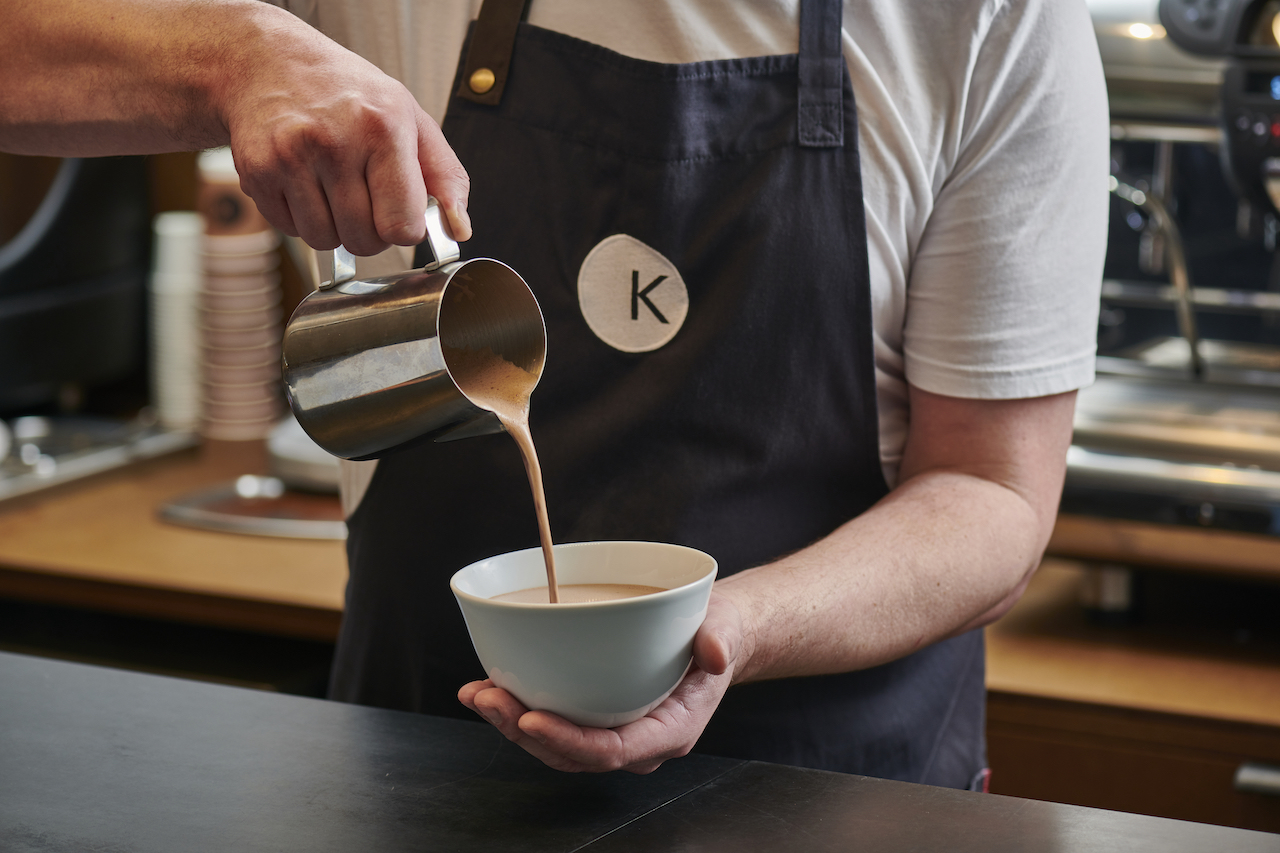
I try the 60% with full fat cow’s milk and no additional flavouring. It’s delicious, silky, very comforting and ever so slightly fruity, but the more I sipped, the sweeter it became. “It’s fairly sweet for a dark chocolate,” says Jens, “and I love the farmers because I know them personally. And that’s also probably why I have such an emotional bond with that chocolate.”
Does he know all the farmers he buys from? “Not all of them. I know the 60% and the 49%, I’m going to see the 35%, 65% the 72% and I’m going to visit the 85% in Columbia after going to Venezuela in June.”
Jens has tried a lot of chocolate, but says that some of the best eating chocolates don’t always work in a drink. It’s nothing to do with quality. Once he’s narrowed down the chocolate varieties, he starts experimenting to see how they react in context with different milks.
“I’ve made great mistakes by deciding on chocolates after eating them,” admits Jens. “So, I don’t eat the chocolate anymore, I just drink them, just as we would prepare them here, whisked up with full fat cow’s milk because it’s neutral and it gives you really good texture. But we do have alternatives like almond, oat, coconut, soya, hazelnut, which is very interesting, but it does add flavour.”

The world of chocolate is as fascinating as wine then. “It’s unbelievable, but I’m becoming one of these ‘oh no, I don’t want to contaminate my palate’ kind of people,” laughs Jens. “Five years ago, I would have laughed at myself but I’m getting more and more sensitive to the flavours and the smells. I don’t drink red wine, and I don’t eat truffles or spicy food when I evaluate chocolate because it just blows my taste buds.”
Jens has lived in England for almost 26 years, longer than he lived in his native Germany, brought here through a combination of his love of Monty Python’s Flying Circus, a place at art school to study photography, and laxer EU restrictions.
But when he opened his first store in Rye in 2013, he was more of an enthusiast than a chocolate expert. How did he catch up with himself?
“Very quickly,” Jens admits. “Trust me, it hit the ground running. When I opened in the April I thought everybody would still drink hot chocolate in the summer, right? No. So I immediately adapted by introducing iced chocolate drinks and milkshakes. I learned a lot. There’s so much information.”
Did he wonder why no-one was doing this before? “Well maybe I was crazy enough to do it. Maybe I had enough faith in the product and the five thousand years of history,” he says.
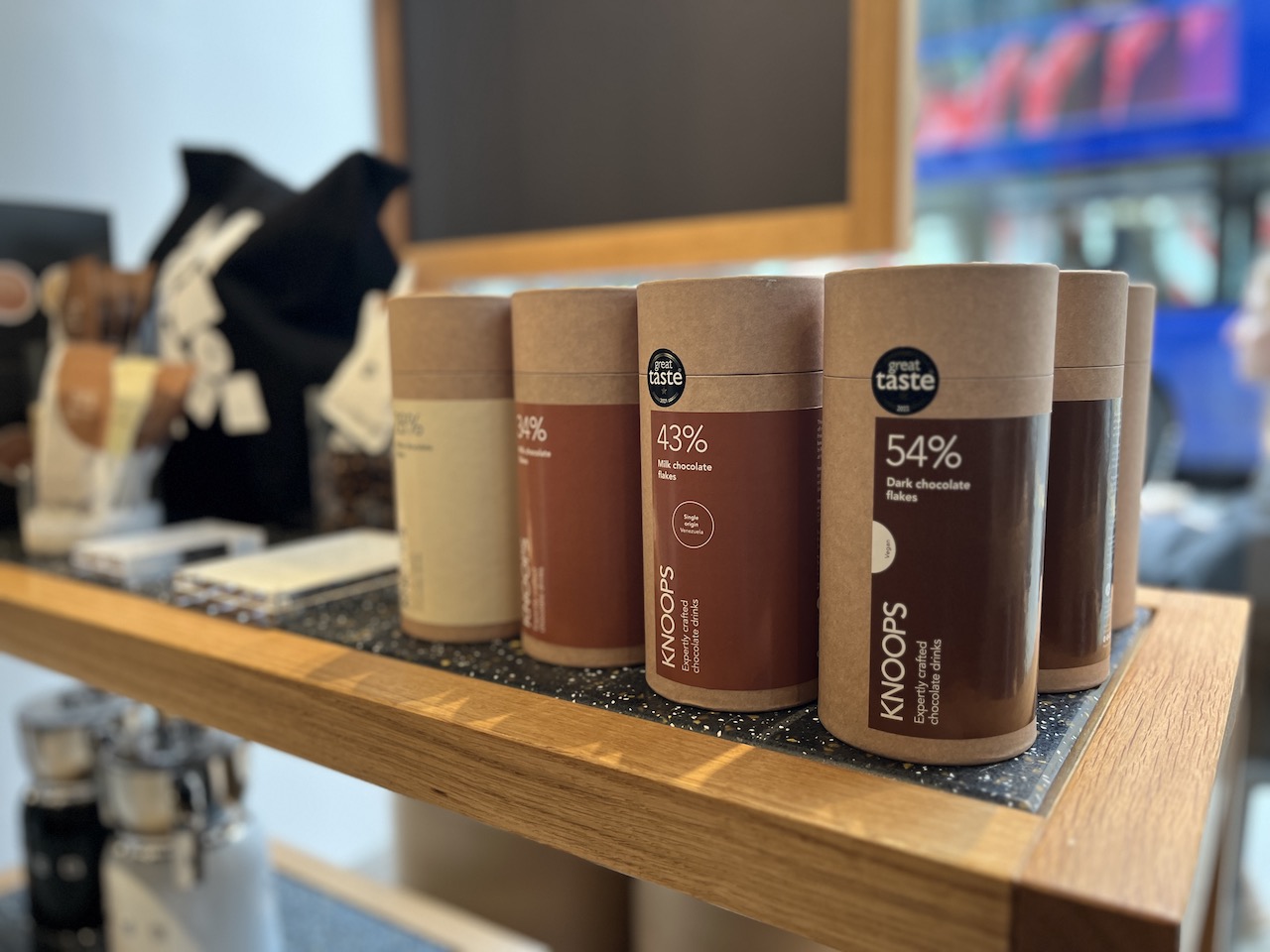
“I always loved chocolate, but never thought of it as a business. I think the moment was the winter 2012 when I was walking through central London, and I couldn’t get a decent hot chocolate. There were the high street coffee chains, or there were the high-end chocolatiers who didn’t offer much choice.
“And then in 2013, I thought ‘there is something here’, I felt it emotionally, rather than commercially. I’d been offered beautiful premises in Rye, and I could see the shop layout. I could see people having their hot chocolates and then I just did it. It really was an overnight gut feeling that I just had to do it.
“It took a little while, although it was immediately recognised as something special. The local community were suspicious, mistaking me for just ‘another coffee shop’, then they understood that I was adding something to the offering. It became a tourist attraction and number one on Trip Advisor across the whole south coast. Then the Daily Telegraph called it the best hot chocolate in the world, which helped just a bit. I can live with that.
“Then three years ago in 2019/20, I was approached by a regular customer who is now our executive chairman. I know about chocolate, and he has that forward vision, so he asked me if I would like to bring it to new locations.
“We opened in London three weeks before the first lockdown. Who knew? But as soon as take out became available we started to do that, because everybody deserved a treat. We also started focussing on the other retail aspects so people could get their treat at home or send it as a gift to somebody else. Soon we were seeing hour-long queues outside, so we knew we were onto something, even in the tough times.
“On a more abstract level,” he ponders, “it could also do with wanting to escape to Columbia or Venezuela, or the Solomon Islands rather than be on the 13th floor of an office block. When it’s a fairly dull and grey day outside, chocolate does inspire people because they’re physically taking something in from a different country. Also a lot of people are being thrown back into their childhood.”
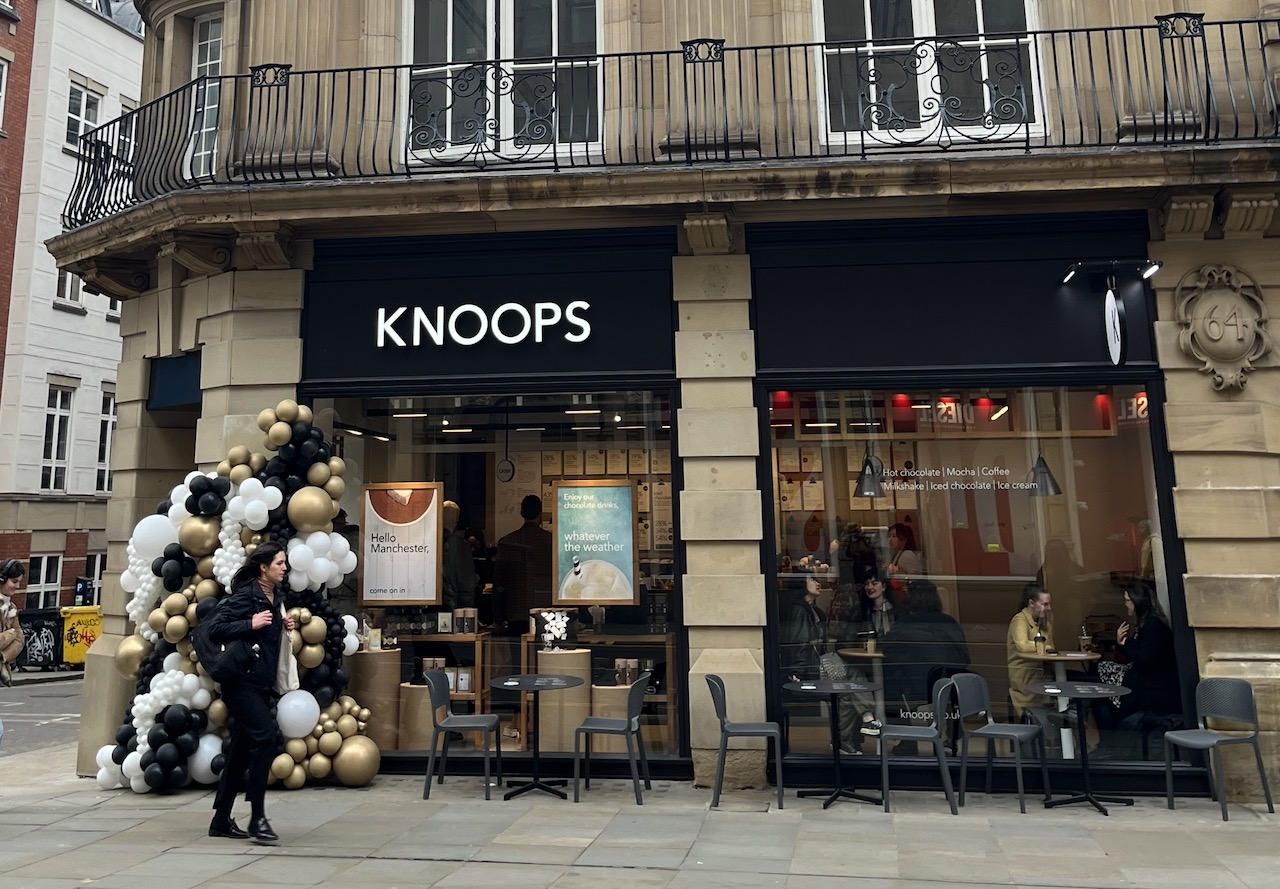
So why open up north? – although Jens is quick to assure me he’s not quite done in the south yet.
“Manchester is perfect,” beams Jens, “I mean look at the people; multi-cultural, very much into their food. There’s a coffee scene here as well which is always a good indicator. It’s young, it’s everybody, and we have beautiful premises here. We had to try it.
“People are starting to recognise us from our southern locations, or they’ve heard of us from the press and social media. Others just walk past and look in. They see a bit of theatre, they see the intriguing percentages on the wall. I worked with the shop designer so that it’s light, inviting, bright and open.”
I couldn’t let Jens go without addressing the elephant in the room. Many cacao producing countries have their own political and economic issues and if you’re going to buy chocolate, you’re also going to have to take responsibility for ethical sourcing. He must have had an idea of what he’d be taking on.
“Not from day one, but the more I started to learn about chocolate,” admits Jens. “I do my research before I go to countries to understand what kind of certificates the chocolate makers subscribe to. You have to see which ones are legitimate and which might be more of a smokescreen.
“But this is an opportunity to change the world. It’s about making cacao farms more sustainable in terms of pay, in terms of deforestation, more intelligent farming, and better fertilisers that don’t exhaust the soil. You start educating.
“It gives me the opportunity to put a little bit of pressure on the chocolate makers, to tell them why I choose this over this. I want to see what progress they’ve made in terms of the education of their children, and how our money been invested. It was a privilege to go to Ghana recently, to meet the farmers and talk to them.”
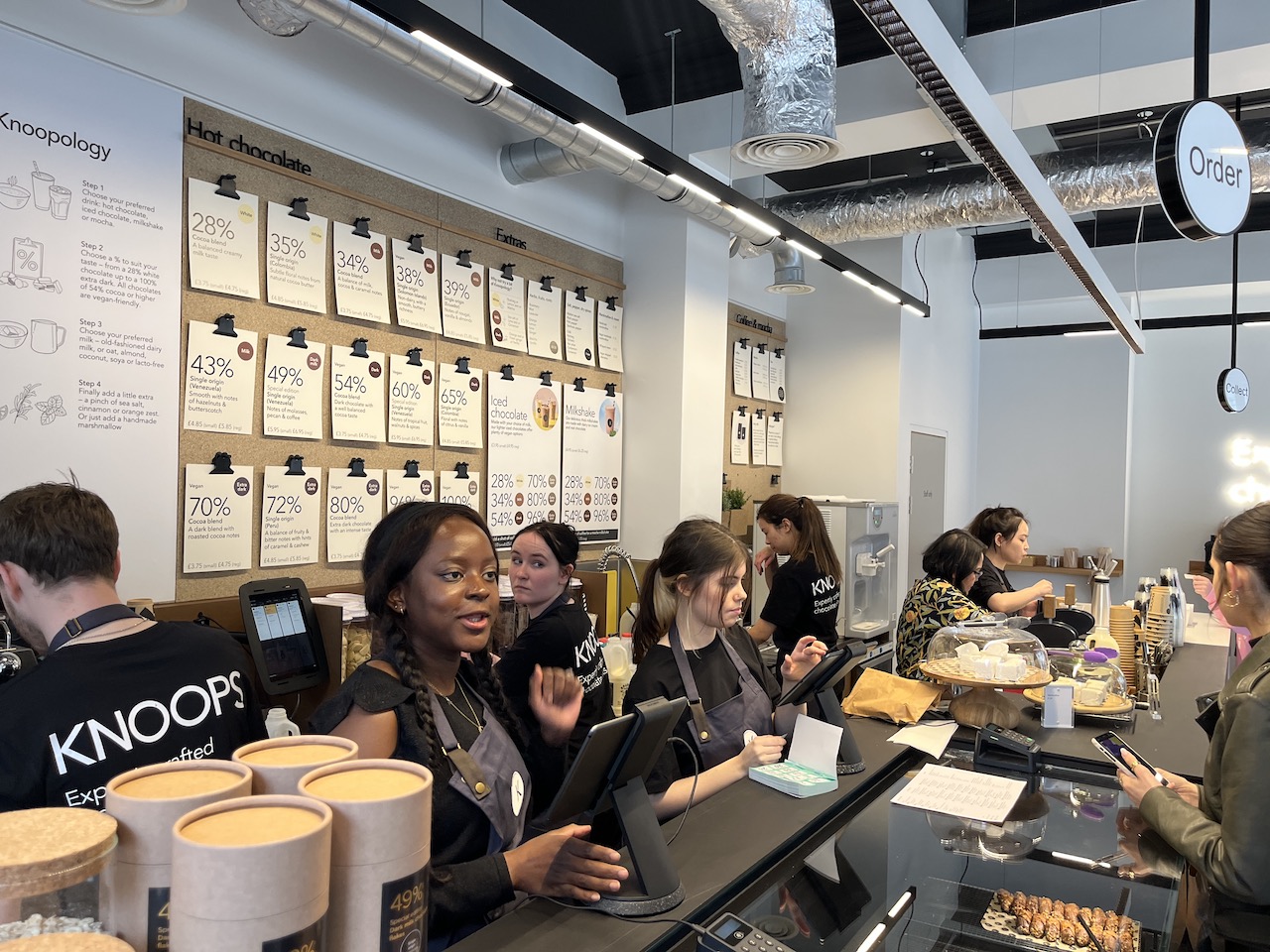
What kind of training do the Knoopologists go through?
“For starters they need to understand what’s in chocolate,” says Jens. “For allergen reasons, but also to understand the ingredients, the fat levels, the more they know, the more confident they are answering questions from customers. They need to know about sustainability and where the beans come from. Because it is a new concept so there are a lot of questions. Questions are encouraged here.
“We do have 22 chocolates, they just don’t all fit on the wall. If I was in charge of the board there would be so many more on there, but it’s already a little overwhelming. That’s why we take the initiative.We’re happy for people to just ignore the numbers if they struggle with the percentages. The knoopologists are on hand to offer advice. I always encourage them to be honest with customers and don’t push anything.”
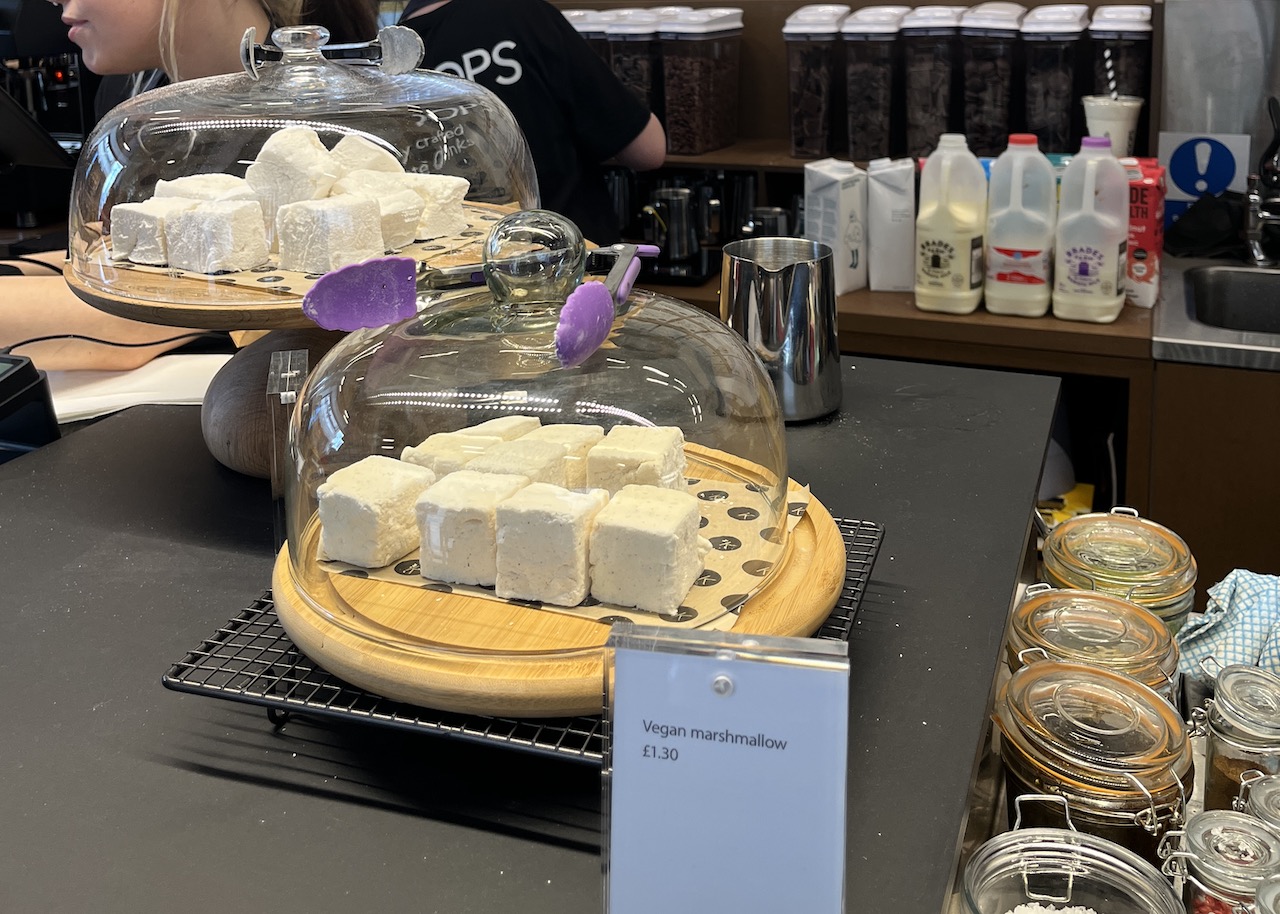
What about all these extra flavours? “We have 20 ingredients and sea salt is the most popular. It counterbalances the caramel undertones. Fresh orange zest is very popular. You only need a little bit. We’re very careful what chilli we put in there because we don’t want to overpower the chocolate. You could mix ingredients as well. Orange and chilli works a treat in a 54% base. It’s sweet, it’s fruity, it’s warming. It’s everything.
“This is about chocolate plus something. There is no law. It’s personal taste. We have lavender flowers, fresh mint, rosemary, cardamom, matcha, so you have chocolateyness plus fragrant ingredients on top. Rosemary and sea salt is one of my favourites, but I have to push people to try because it’s unusual.”
“Our classic mocha is a mild and versatile 54% dark chocolate – you can throw any ingredient in there and it always works. A double shot espresso and milk of your choice. Our coffee is 100% Brazilian Arabica which has been custom roast for us. We also serve coffee here. Coffee is important, very often it brings the customers in first. I had a photographer here this morning who wanted a coffee. But he took one look at the menu and then changed his mind.”
That’s not really surprising. Chocolate would cheer anyone up on a miserable day wouldn’t it?
Knoops, 68 Cross Street, Manchester, M2 4JQ

